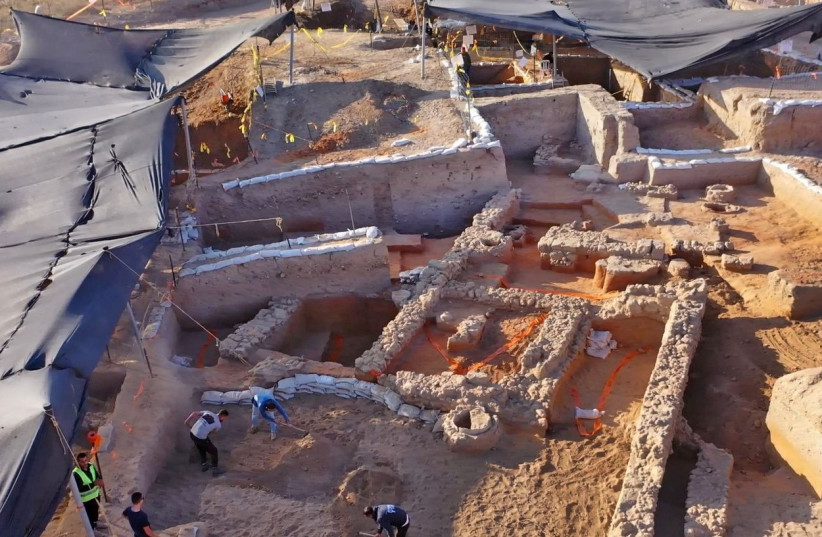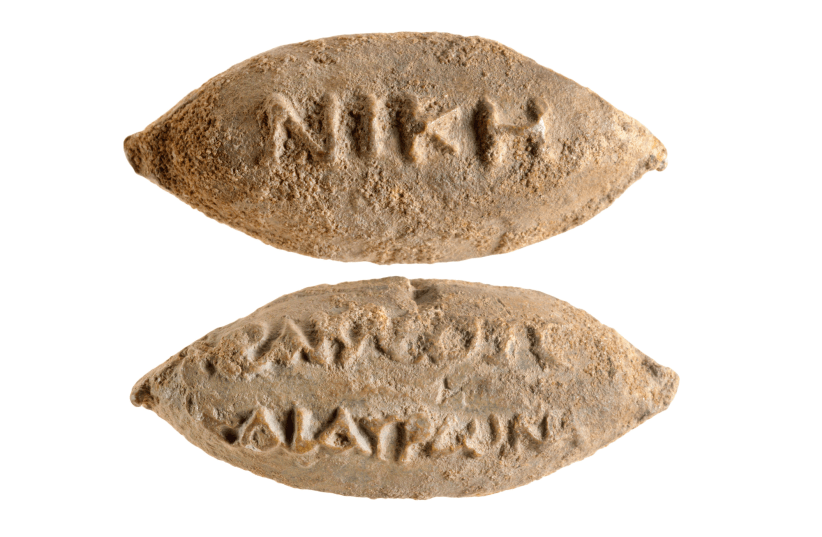A lead sling bullet has been discovered in Yavne bearing an inscription showing that it may have belonged to a Greek soldier in the war against the Hasmoneans during the Hellenistic Period, the Israel Antiquities Authority revealed on Thursday morning.
The rare projectile, 4.4 centimeters long, intended for use in an early sling, was inscribed with the message, “Victory of Heracles and Hauronas,” meant to ensure victory in battle. “The pair of gods Hauron and Heracles were considered the divine patrons of Yavne during the Hellenistic period,” explained Prof. Yulia Ustinova from Ben-Gurion University of the Negev, who deciphered the inscription. “Actually, the inscription on a sling bullet is the first archaeological evidence of the two guardians of Yavne, discovered inside Yavne itself. Until today, the pair was only known from an inscription on the Greek island of Delos.”
The message was intended as a threat toward the Greek warrior’s adversaries, she explained. “Lead sling bullets are known in the ancient world beginning in the 5th century BCE, but in Israel few individual sling bullets were found with inscriptions,” she said. “The inscriptions convey a message of unifying the warriors with the aim of raising their spirits, scaring the enemy, or a call intended to magically energize the sling bullet itself.”
"Lead sling bullets are known in the ancient world beginning in the 5th century BCE, but in Israel few individual sling bullets were found with inscriptions."
Prof. Yulia Ustinova, Ben Gurion University of the Negev
Ancient psychological warfare

Indeed, the inscription was meant to throw the enemy off their game, so to speak. However, there is no way of knowing whether or not the projectile actually belonged to a Greek soldier, according to Pablo Betzer and Dr. Daniel Varga, directors of the excavation on behalf of the Israel Antiquities Authority.
According to them, there is a chance that it was used during a conflict between the Greeks and the Hasmoneans.
“In the 2nd century BCE, pagan Yavne – which was an ally of the Seleucids (the Greeks who ruled Eretz-Israel), were subject to attacks by the Hasmonean armies,” the directors explained. “The Hasmoneans sought to subjugate the other nations and create a homogeneous and ‘pure state’ from a religious-ritualistic point of view. The lead sling bullets, announcing the imminent victory of the gods of pagan Yavne, are tangible evidence of a fierce battle that took place in Yavne at that time.”
The Yavne excavation is an ongoing large-scale project. There will be an official presentation with free entrance to the public on December 13 at the Yavne Culture Hall on the newly-found projectile.
